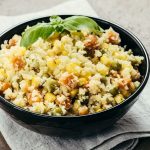
Chips, dips, wings and other fatty and salty things — Super Bowl parties can be a challenge for people with diabetes, high blood pressure or high cholesterol, an expert warns. “For people with diabetes, the goal is to keep the carbohydrates down — and encourage more of the protein-rich foods — to enhance satiety,” said Jo Ann Carson, dietician-nutritionist at UT Southwestern Medical Center in Dallas. If you have diabetes and are going to a Super Bowl party, find out if it’s going to be a high-carb affair. If so, take your own dishes or coordinate with others to make sure there are healthier food choices, Carson suggested in a medical center news release. People with diabetes should eat slowly in order to limit how much they consume, and should get up and walk around during each commercial break, she advised. People with high blood pressure, meanwhile, should focus on fruits and vegetables and avoid salty snacks, dips and sauces. If you’re hosting or attending a party, your healthiest bets are: Salad fixings, such as greens, sprouts, mushrooms, onions, peppers, radishes and tomatoes, with sugar-free and low-calorie dressings. Crunchy vegetables like broccoli, cauliflower, asparagus and cucumbers. Drinks such as water, unsweetened tea, coffee and calorie-free diet sodas. Proteins such as grilled fish, skinless chicken or turkey, and/or soy-based “veggie” burgers. And low/nonfat dairy products, including… read on >



























-300x200.jpg)







-300x169.jpg)
